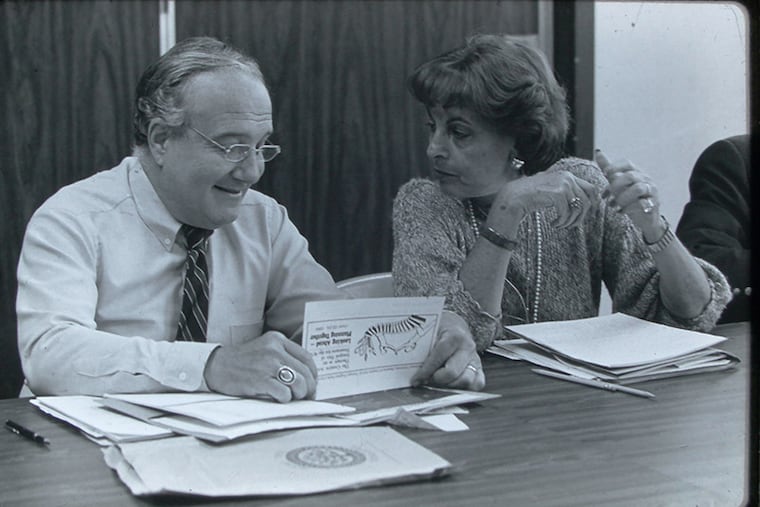Myra F. Levick, psychologist who helped establish the field of art therapy, dies at 96
In the 1960s, art therapy was just beginning to be known as a way to help heal psychological troubles. Dr. Levick was a founder of the art therapy profession in Philadelphia.

Myra F. Levick, 96, a clinical psychologist who helped found the field of art therapy, died Wednesday, Sept. 16, of complications from a seizure at the Abramson Center for Jewish Life in North Wales.
Like many women of her generation, Dr. Levick was first a wife and mother. The Philadelphia native married Leonard Levick, her high school sweetheart, at age 19, and supported him through medical school and the start of his medical career while raising three daughters.
During the 1940s, when women rarely worked outside the home, she wanted a career.
“I would work while he was in medical school on condition that he would send me to art school, so 17 years later I went to Moore College of Art and Design,” she told 6abc news in a March 2019 interview.
“And he honored the deal; he supported her every step of the way,” said daughter Marsha.
Dr. Levick earned a bachelor of fine arts degree in painting from Moore, a master’s degree in education from Temple University, and a Ph.D. in psychology from Bryn Mawr College.
In the 1960s, art therapy, the practice of using creative methods of expression to foster psychological healing, was in its infancy. “The art therapist does not interpret,” she said during the television interview. “The important thing is for someone to appreciate their own artwork and understand it.”
She helped create a graduate-level art therapy program at Hahnemann Medical College and Hospital. The medical school became Hahnemann University in 1981 and part of Drexel University in 2002. The art therapy program is now at Drexel.
Debuting with six students, Hahnemann’s program was considered radical because it was housed in a medical setting, where art therapy students could work alongside psychiatrists and nurses, according to a history of the profession posted on Drexel NOW, an online newsletter.
Just after the program began, cofounder Morris J. Goldman, a psychoanalyst and the director of psychiatry at Hahnemann, died at age 39. “The whole thing was just strange,” Dr. Levick said about her start in the profession.
Goldman had recruited Dr. Levick to work with his patients, first at Albert Einstein Medical Center North in 1963, and then at Hahnemann.
“I was only an adjunct professor. They didn’t have women professors in those days,” Dr. Levick told Drexel NOW. “We spent several weeks mourning this very brilliant young man, and then people from the graduate school invited me to a meeting and said they wanted the program to remain. They would have to name me an assistant professor to become director of the program.”
In addition to developing the art therapy program, Dr. Levick was also named activities director of Hahnemann’s mental health center. She became a tenured professor in Hahnemann’s department of psychiatry in 1976.
She continued the work at Hahnemann for 20 years, while mentoring students and publishing books and journal articles.
In 1969, Dr. Levick created the American Art Therapy Association and became its president. The society grew out of a 1968 meeting convened at Hahnemann. Begun with just 20 members, the organization now numbers 4,000, according to Drexel NOW.
At age 62, Dr. Levick retired from Hahnemann and moved to Florida, where she practiced art therapy. She returned to the Philadelphia area in 2018, when her health began to decline, her daughter said.
Dr. Levick stayed active, teaching classes in “art and aging” to fellow retirees at Blue Bell Place, her assisted living facility in Montgomery County. She also painted in oils, acrylics, and watercolor until two months ago.
“Her professional and personal journeys were atypical for her time,” her family said in a tribute. “As The Feminine Mystique was being written, she was a living example of the power and brilliance of women."
She didn’t always make it to the school play, but “we understood the courage of her choices, the brilliance of her mind, and the priceless gift of leadership, power, and equality that she bestowed on us,” her daughters said in a statement.
Her husband died in 2011. Besides her daughter, she is survived by daughters Bonnie Cossrow and Karen Gomer; five grandchildren; and five great-grandchildren.
Plans for a memorial service were pending.